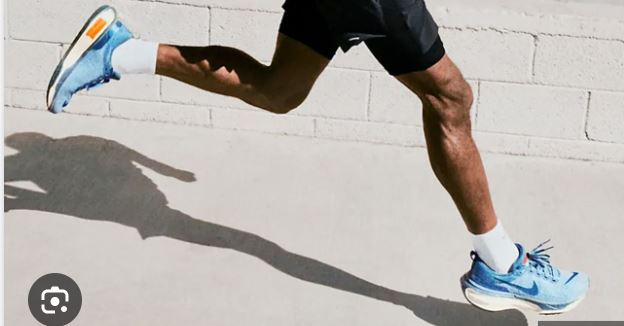
It’s no secret that runners are a dedicated lot. Rain or shine, sleet or snow, they’re out there pounding the pavement. But different climates require different considerations when choosing running shoes. The scorching heat of a Texas summer is vastly different from the biting cold of a Minnesota winter, and so should be the shoes you wear.
The right footwear can significantly impact a runner’s performance and comfort. Wet and slippery conditions demand superior grip, whereas arid environments require enhanced breathability. It’s not merely about comfort, but safety too. Slipping on a wet surface or overheating can quickly turn a routine run into a hazardous endeavor.
Furthermore, the longevity of the shoe itself can be compromised if not suited to the environment. Materials react differently to varied climates, with some being prone to degradation in particular conditions. Therefore, investing in the right shoe is both a financial and a performance-driven decision.
Understanding and analyzing your primary running environment is the first step in choosing the ideal footwear. It sets the stage for the factors to be considered, ensuring a tailored and optimal choice.
Tropical Deluge: Running Shoes for Rainy and Humid Climates
The dense humidity and unpredictable rain showers characteristic of tropical climates present unique challenges for runners. Feet tend to sweat more, and sudden downpours can drench shoes in an instant. Hence, choosing footwear that addresses these concerns becomes paramount.
Breathability is the first factor to address. Shoes with lightweight mesh uppers facilitate air circulation, ensuring your feet remain cool. This not only provides comfort but reduces the chances of blisters and fungal infections that can arise from prolonged moisture.
Water-resistance is another crucial feature. While no shoe can be completely waterproof (unless you’re considering a fully sealed shoe, which would compromise breathability), certain materials and designs can repel water, ensuring your feet stay relatively dry during light showers.
However, it’s essential to strike a balance. Overly sealed shoes might protect against rain but can trap sweat, leading to discomfort. Look for shoes labeled as “water-resistant” rather than “waterproof” for the right mix of protection and ventilation.
Lastly, a good grip is vital. Wet surfaces are notoriously slippery, and a shoe with a high-traction outsole can prevent unwanted accidents. Rubber outsoles with multi-directional lugs or patterns tend to offer the best grip on wet surfaces.
Braving the Cold: Footwear for Frigid Environments
Winter running is not for the faint of heart. The cold can be biting, the paths slippery, and the motivation to step outside often lacking. But with the right footwear, one can tackle such conditions with confidence. When running in colder climates, certain shoe attributes become non-negotiable.
Insulation is paramount. The feet, with their numerous blood vessels, are particularly susceptible to the cold. Shoes with a thermal lining, often made of materials like Thinsulate or Gore-Tex, provide the necessary warmth while still allowing some degree of breathability.
Waterproofing takes on added importance in cold climates. This is primarily due to snow, which can seep into shoes, leading to wet and, consequently, frigid feet. Shoes with a waterproof membrane are a must, especially if you’re treading through snow or slush-filled paths.
The outsole, as in tropical climates, is crucial. But the focus here is on traction over ice. Look for shoes with deeper lugs and, if possible, specialized rubber compounds designed to grip icy surfaces.
Lastly, consider the shoe’s closure system. Traditional laces can become problematic if you’re wearing gloves, so quick-lace systems or even Velcro can offer more accessible adjustments in cold weather.
The Dry Challenge: Footwear for Arid and Desert Climates
Running in desert or arid environments is a test of endurance. The intense heat, combined with the often sandy terrain, demands footwear that’s up to the challenge. Here, breathability reigns supreme. The intense sun can rapidly heat feet, making ventilation a top priority.
Mesh uppers are again the ideal choice, offering maximum airflow. Light colors, reflecting the sun’s rays rather than absorbing them, can also help in keeping feet cooler. The midsole should provide ample cushioning, given that desert terrains can be unexpectedly hard.
The outsole’s focus in arid climates is on sand traction. While not as slippery as wet surfaces, sand can pose its challenges, especially on dunes or inclines. Shoes with broader and shallower lugs can provide the necessary grip, preventing the sand from accumulating.
Protection from debris is another aspect to consider. Deserts are home to a variety of thorny plants, and the sand itself can be a nuisance. A shoe with a gusseted tongue and a toe cap can offer protection from both these elements, ensuring a more comfortable run.
High Altitude Pursuits: Shoes for Mountainous Terrains
Running in the mountains is as challenging as it is exhilarating. The thin air, rugged trails, and rapidly changing weather conditions demand a shoe that’s versatile and durable. When selecting footwear for such environments, stability becomes a top consideration.
A reinforced midsole, often with a plate or shank, can provide the necessary rigidity, ensuring your feet don’t flex excessively on uneven surfaces. This not only offers comfort but also reduces the risk of injuries. The upper should be robust, preferably made of materials like leather or synthetic overlays, to withstand the rigors of the trail.
Grip, given the varied terrains encountered in the mountains, is of utmost importance. Deep lugs, combined with sticky rubber compounds, can provide traction on everything from loose gravel to slick rocks. Furthermore, a shoe with a reinforced toe cap can prevent injuries from accidental kicks against rocks or roots.
Breathability, while always essential, needs to be balanced with protection in mountainous terrains. Sudden rain showers or crossings of shallow streams are common in mountain runs. Hence, a water-resistant layer, combined with quick-drying materials, is a boon. A shoe with drainage ports can also be beneficial, allowing any water that does enter to quickly drain away.
Lastly, consider ankle support. While many mountain runners prefer low-top shoes for their lightness and flexibility, others opt for mid or high-top models that offer additional ankle support. This can be especially helpful in preventing sprains on uneven or rocky terrains.
Urban Jungle: Selecting Shoes for City Running
City running, with its concrete jungles and bustling streets, offers a unique set of challenges. The hard surfaces can be taxing on the feet and joints, while the constant stop-and-start at traffic lights and intersections demands a shoe that offers quick responsiveness.
Cushioning is of paramount importance in urban environments. The unyielding nature of concrete can amplify the force of each footfall, making a well-cushioned midsole crucial. Look for shoes that feature responsive foam technologies or gel inserts, which can mitigate the impact on your joints.
Breathability is also a significant factor. City runs often mean dealing with pollution, and a well-ventilated shoe can help in wicking away sweat, keeping your feet fresh. Lightweight mesh uppers are typically the best choice for city terrains.
Traction, while not as crucial as in some of the more rugged environments, still plays a role. Wet sidewalks, metal grates, and even painted street markings can become surprisingly slippery. A shoe with a flat yet grippy outsole can be beneficial in such conditions.
Lastly, given the nature of city environments, a shoe’s aesthetics might also be a consideration. Many urban runners prefer footwear that seamlessly transitions from the trail to the café, offering both performance and style.
A Global Perspective: Relying on Expert Reviews
In our increasingly connected world, the wealth of information at our fingertips is staggering. When selecting running shoes for different climates, leveraging expert reviews can offer invaluable insights. Enter platforms like Seek & Score. Rooted in California’s vibrant landscapes, this lifestyle website serves as a trusted compass for shoppers worldwide.
Seek & Score’s footwear section provides readers with detailed reviews on the latest models. From insights on breathability to the effectiveness of a shoe’s grip, it offers an in-depth analysis, assisting buyers in making informed decisions. The platform isn’t just about reviews either. With deals, giveaways, and articles on various footwear products, Seek & Score is a treasure trove for running enthusiasts.
This reliance on expert reviews simplifies the decision-making process. By understanding real-world experiences and performance, one can select the perfect shoe tailored to their specific environment, ensuring optimal comfort, performance, and longevity.
The Journey to the Perfect Shoe
Choosing the right running shoe is a blend of art and science. While technological advancements have equipped shoes with a range of features tailored to different climates, personal comfort and fit remain paramount. It’s essential to remember that the “best” shoe is subjective and varies from one individual to another.
Running, at its core, is a deeply personal experience. It’s a dance between the body and the environment, each step echoing the rhythm of the heart. By selecting the right footwear for your specific climate, you not only optimize performance but also elevate this dance, making each run a journey to remember.
In our ever-changing world, where environments can be as diverse as the people inhabiting them, taking the time to choose the right shoe becomes not just a choice, but a commitment—a commitment to oneself, to one’s passion, and to the countless miles that lie ahead.
Write and Win: Participate in Creative writing Contest & International Essay Contest and win fabulous prizes.

